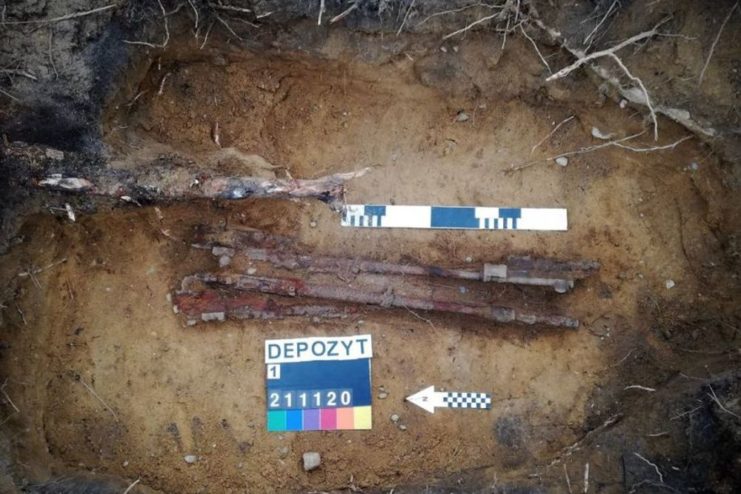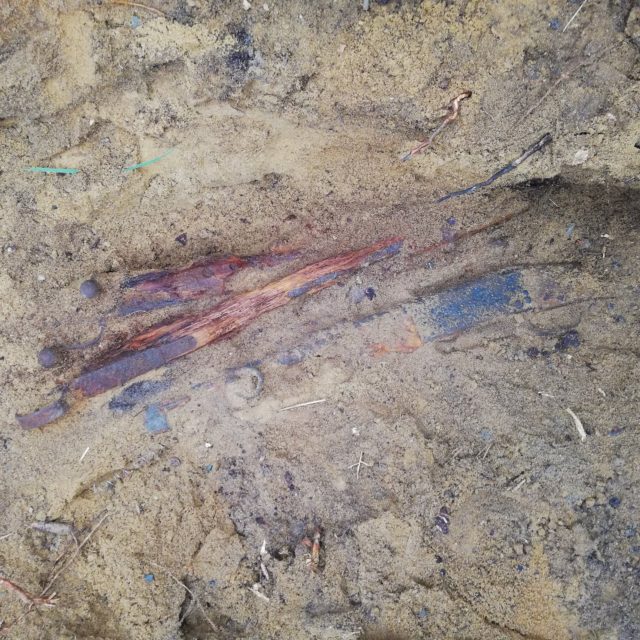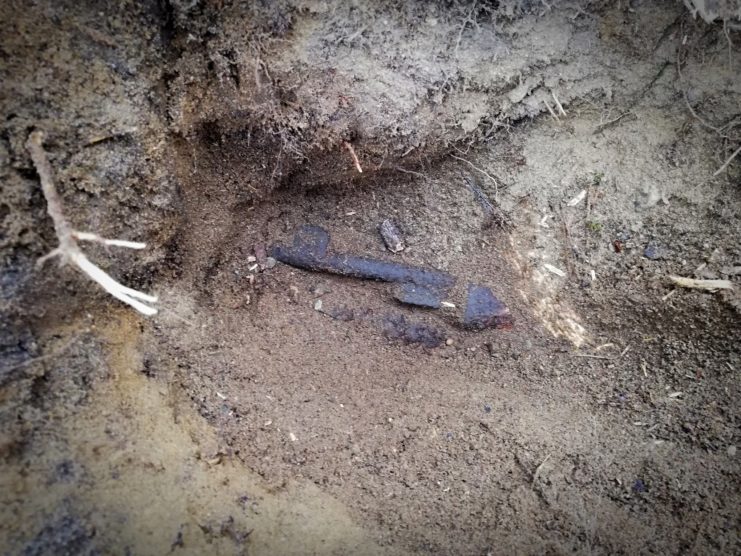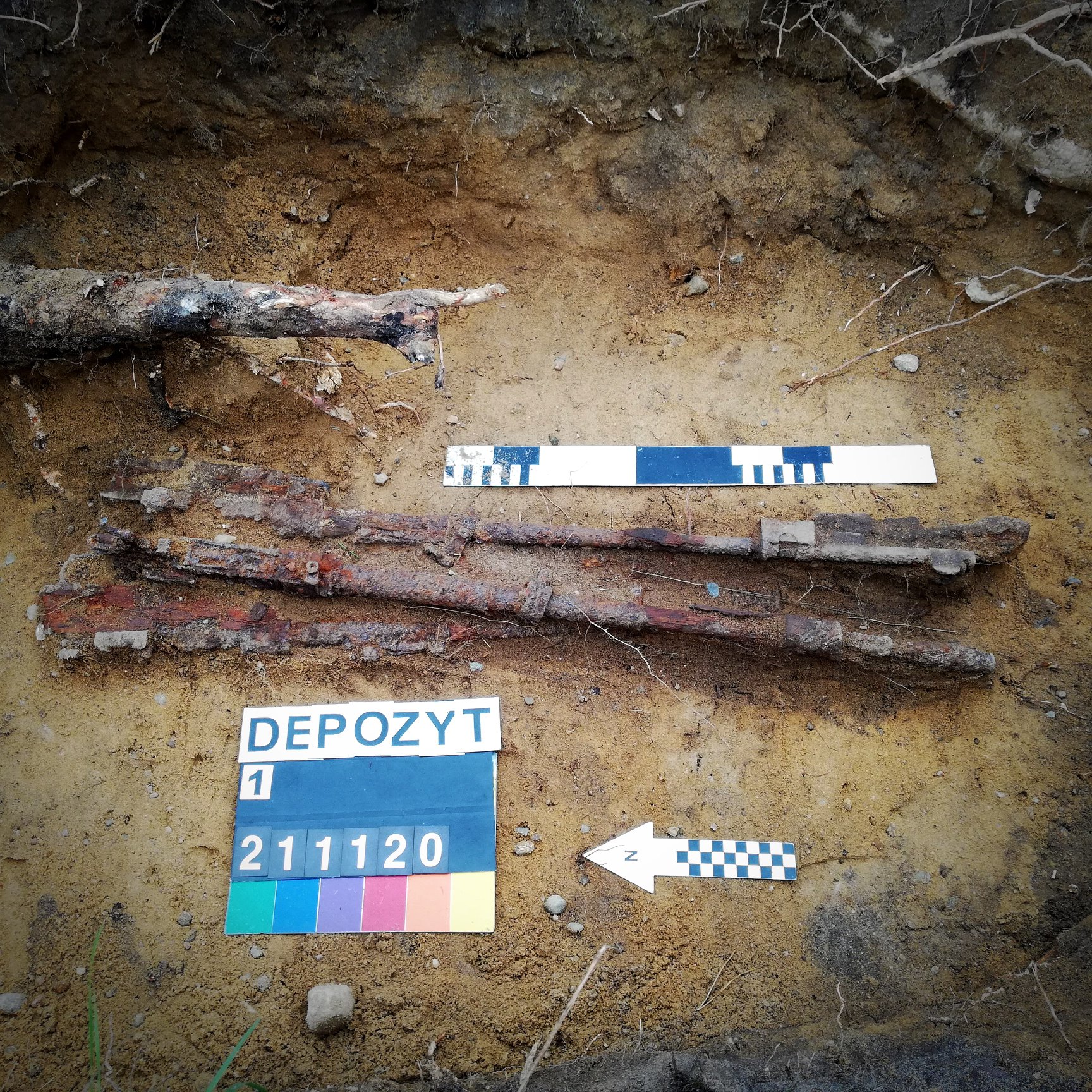The woods between Poland and Germany are rife with treasures and evidence of the terrible, tragic events that took place there when the Second World War raged for six years, beginning in 1939.
And while the land has been peaceful and quiet for more than 75 years now, there are still objects under the ground that speak to the conflict waged there, objects like a cache of weapons recently found by a group of explorers from Poland who spend their time looking for treasures such as these. On the trail of this bounty for more than four years, the group, the Perkun Exploration Association, finally struck gold in late November.
They were given a clue to the loot’s location by a passerby on a bicycle four years ago, who took an interest in the equipment and tools the men were using on another project. During that casual conversation, the gentleman told the explorers that a relative had once suggested where a store of weapons could be found. “He said his grandfather had shown him a place in the woods where he buried a deposit of firearms in the 1950s,” explained group leader Pawel Piatkiewicz to the local media on November 30th.

It took several years to get permission to scour the woods outside of Rzepin, in western Poland, but when approval was finally granted, the team went out with metal detectors and other devices to help in their search. It didn’t take too long for them to discover that the stranger had told them the truth.
Ultimately, the treasures included a dozen weapons from the war, including a German MP-40 sub-machine gun, a Soviet sub-machine gun, nine German service revolvers and German Mauser rifles, among other things. Perhaps the greatest, most “eureka!” discovery was a French made Lebel R35 rifle.
All the guns are now being cleaned and restored, and will eventually go on display in the Kostrzyn nad Odra Fortress, which shows important historic items from both world wars.
Piatkiewicz and his group are not certain who buried the guns, or why, but they advanced a theory or two. Possibly, whomever owned the weapons did not have a legal permit, and decided to bury them rather than turn them over to the authorities. As for owners; they suggest that the guns may have belonged to anti-Soviet resistance fighters, who remained active in the region long after World War II – right into the 1950s, in fact.
But the explorers cannot know for sure who owned them or why these treasures were buried in the forest.

Piatkiewicz said, “We can only assume that the settlers who arrived here at the end of World War II might have felt a threat in new, unknown territories. Times were very turbulent.” And once the climate calmed down, politically, whomever had the guns felt safe enough to dispose of them quickly by simply digging a hole and chucking the weapons into it. However it happened, no one can ever know for sure; the stranger on the bike told them that his grandfather was deceased.

There have been many discoveries relating to the war found in Poland; it was, after all, the first country the Nazis invaded and occupied before the formal announcement of war was declared. Last June, for example, a notorious diary was supposedly located beneath a palace that holds secrets about where the Germans buried billions in gold bars.
And at the concentration camps, those who care for the grounds continue to find hidden spoons, buttons and other ephemera of the inhabitants of those terrible places.
Another Article From Us: Researchers Nearly Finished With Excavation of Viking Longship in Norway
It isn’t surprising that the explorers found a cache of weapons; the only question now is, how many more awful reminders of that global conflict remain hidden under the soil?
